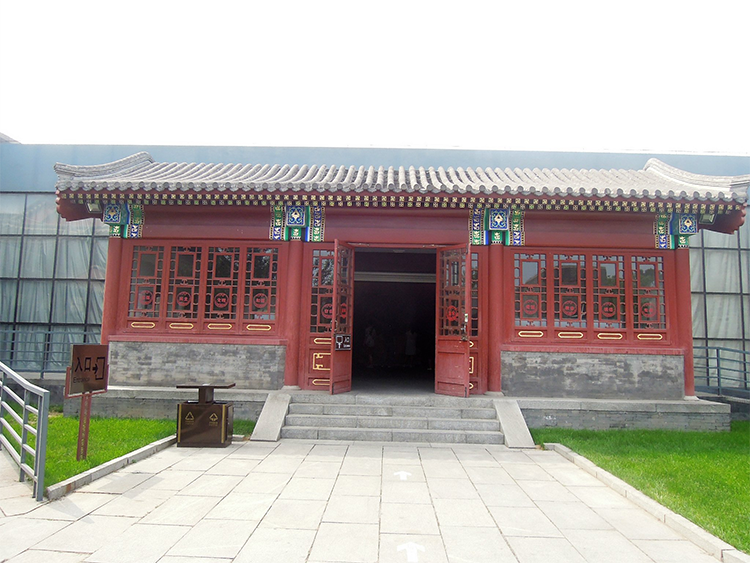Shanhaiguan Great Wall Museum: Visitor Guide — Tickets, Hours & Top Sights
Introduction:
Standing beneath the weathered city wall at Shanhaiguan and running your fingers over Ming-dynasty bricks, you might wonder how many stories this “key” to the Chinese dragon hides. At the Shanhaiguan Great Wall Museum, history is not a static display—gunpowder smoke still seems to linger around early firearms, and the shouts of border soldiers echo faintly through rusted cannon iron. Housed in a building modeled after a Great Wall watchtower, the museum presents 1,100 precious artifacts and immersive exhibits that unlock the military secrets and cultural DNA of the “First Pass Under Heaven.”
1. Soul Positioning: An Encyclopedia of Great Wall Culture
As China’s first museum devoted specifically to the Great Wall, Shanhaiguan uses eight well‑curated exhibition halls to explain the wall’s threefold identity: a military engineering marvel, a bridge of ethnic integration, and a symbol of civilization. Unlike the busy crowds at Badaling, Shanhaiguan’s treasures speak softly—an inscribed brick might record a craftsman’s name, a fracture on a Ming cannon may point to a fierce battle. This focused, small‑scale storytelling lets history lovers peel back layers like archaeologists.
2. The Building Is the First Exhibit
Completed in 1991, the museum’s structure cleverly borrows the stepped profile of a Great Wall enemy tower and its square watch windows, appearing from a distance as a modern fortress. Inside, design details echo the wall’s logic:
– The entrance hall’s domed ceiling features star charts, recalling ancient wisdom of “observing the heavens to build cities.”
– Sloped exhibition galleries symbolize the wall’s ascent along mountain ridges.
– A multimedia terrain model uses light and motion to show Shanhaiguan’s strategic role locking Liaoning and Hebei provinces.
Architecture buffs should not miss the second‑floor terrace, which frames both the actual Laolongtou (Old Dragon’s Head) where the wall meets the sea and the museum’s miniature model—an exquisite juxtaposition of real and replicated views.

3. Three Signature Treasures: Feel the Heartbeat of the Wall
▶ “Great Wall Worker’s Mark” Brick (Ming dynasty)
This unassuming brick bears an incised inscription like “Left XX kiln made” — direct evidence of the Ming system that required craftsmen to mark bricks for accountability. It’s an early form of quality traceability.
▶ General Shenwei Iron Cannon (early Qing)
A two‑ton artillery piece pockmarked from use, once stationed at the Weiyuan City defense. Cannons of this type helped Wu Sangui resist Li Zicheng’s forces in 1644, an event that reshaped China’s history.
▶ Soldier’s Letter from the Wall (replica)
A rough, intimate letter from a Ming soldier to his wife conveys longing in the face of the cold and duty. An AR interactive lets visitors “travel back” to a 400‑year‑old beacon tower and hear a voice actor read the letter aloud.
4. Recommended Immersive Routes
⚡ Quick Highlights (1 hour)
Entrance hall → Great Wall History Hall (check the Spring‑Autumn and Warring States earthen wall cross‑section) → Military Hall (firearms display and attack‑defense animations) → Culture Hall (selected Great Wall literature and painting).
⏳ In‑Depth Study Route (3 hours)
Add the Construction Techniques Hall (moveable mortise‑and‑tenon models you can assemble), the Wall and Ethnic Groups Hall (Xianbei horse saddles, Mongol water skins), and finish with a 15‑minute film in the 360° panoramic theater.
📸 Hidden Easter Egg: In a corner of the Military Hall there’s a “listening” station—press your ear to a hollow replica enemy wall and hear simulated enemy tunneling. Ancient defenders relied on similar acoustic warnings to detect sappers.

5. Practical Tips: Visit Like a Local
⏰ Opening Hours
High season (May–Oct): 8:30–17:30 | Low season (Nov–Apr): 9:00–16:30 | Closed Mondays (except public holidays).
🎫 Tickets and Entry
– Admission is free, but bring ID to exchange for a ticket at the entrance.
– Foreign visitors can present their passport to receive an admission voucher.
– Special exhibitions may charge a small fee (RMB 20–30); check the official site before you go.
🚌 Getting There
– A taxi from Shanhaiguan Railway Station takes about 10 minutes (roughly RMB 15–20).
– Take Bus No. 25 to the “Great Wall Museum” stop, then walk 3 minutes.
– Ideal one‑day itinerary: museum → Shanhaiguan Ancient City (try the local “Four Bun” lunch) → Laolongtou scenic area where the Great Wall meets the sea.
💡 Services
– English audio guides are available at the rental desk on the right side of the main gate (RMB 20 per device).
– There is a scenic café on the second floor; try the limited‑edition “Great Wall soda.”
– Free Wi‑Fi throughout the museum: connect to “SHSM‑Free.”
6. Notes for Culture Enthusiasts
– A military boundary map replica, the “Nine Border Map,” shows Ming frontier defenses down to each beacon gap.
– Folk paper‑cut art in the Culture Hall includes a full Sima‑tai section crafted by an elder from northern Shaanxi.
– At the exit, an electronic signing wall turns visitors’ names into virtual bricks, which are digitally “laid” into an online Great Wall mosaic.

Conclusion:
At Shanhaiguan Great Wall Museum, history never reads like a dry timeline. When sunset slips through replica arrow slits and paints diamonds of light on an old cannon, you begin to understand that the Great Wall’s greatness lies not only in its length but in the ordinary lives frozen in each stone. This six‑hundred‑year conversation is one of the most moving ways to understand the Chinese spirit.


